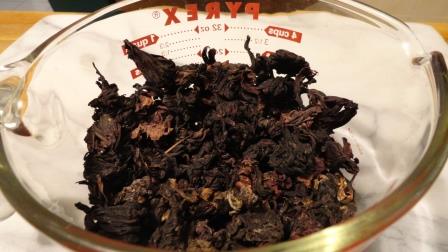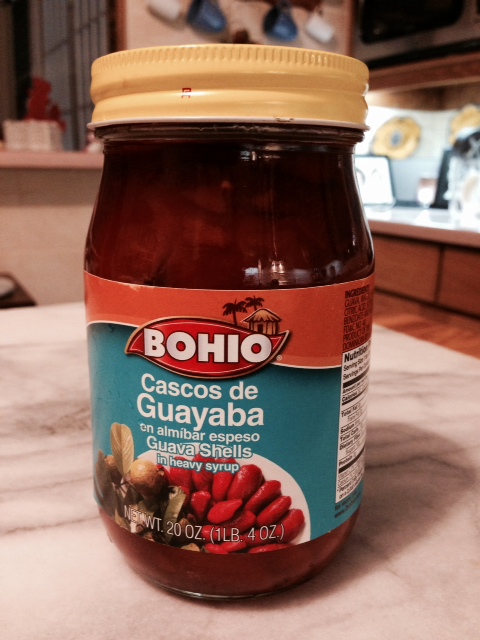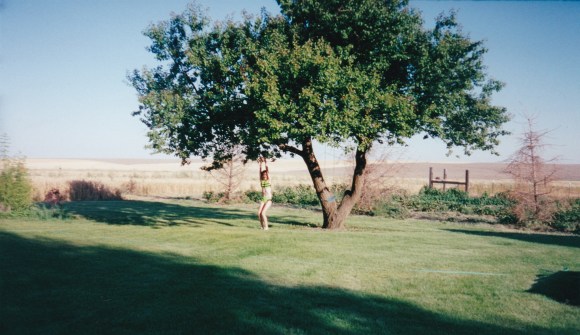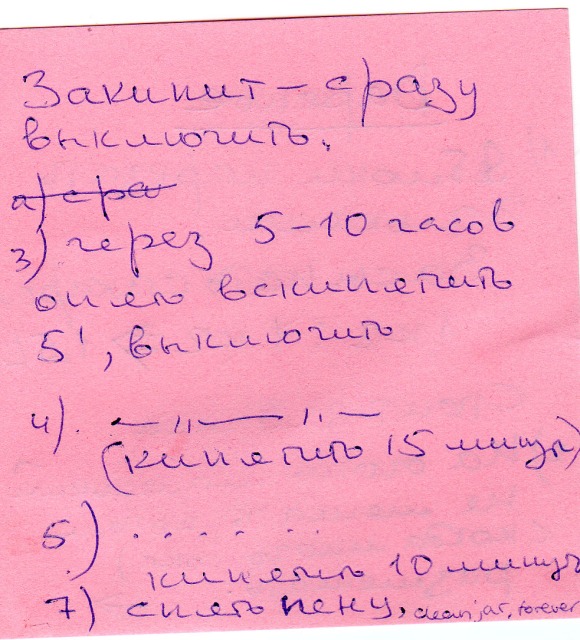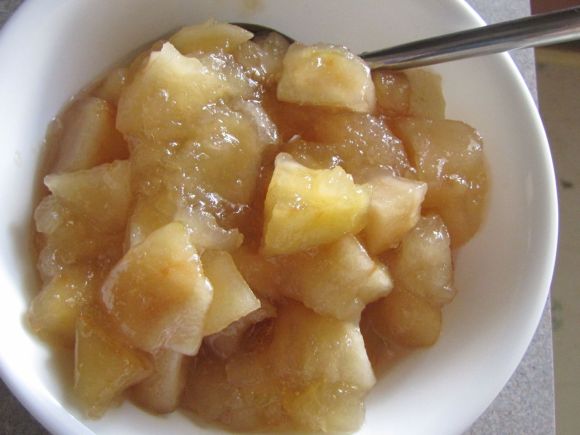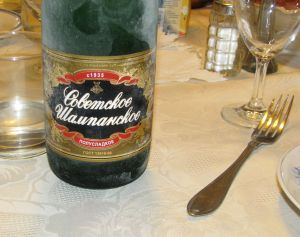Fruit, juicy…..how about a nice tropical punch? Sheesh, did that commercial really make anyone want to buy Hawaiian Punch? I have to admit, I did like artificially flavored and colored sugar water when I was a kid, but now I know it was a poor imitation of the real thing, which is a refreshing beverage made by steeping dried hibiscus flowers and sweetening the resulting “juice” to taste (this is known in Mexico as agua de jamáica). A tall iced glass is so good on a warm day, and the fruity flavor, floral aroma, and vivid red color will no doubt let you imagine yourself on a sunny beach with a tropical breeze blowing through your hair. I made the agua not long ago and thought, why not try to capture that taste in a jar? I tossed in fresh ginger and scotch bonnet peppers for some tropical heat, cooked it into a jam, and ¡caramba! The result is sweet, tart, spicy, and delicious. I can think of so many uses for this jam: plop it over a brie round, cover with puff pastry and bake, or spread it over a block of cream cheese and dig in with your favorite crackers, or mix some of it up with a little soy sauce and use it to glaze baked or barbecued chicken. What the heck, eat it with a spoon!
The recipe includes a few specialty ingredients, but they shouldn’t be too hard to find, and if they are, I have some suggestions for substitutions. You’ll need the dried hibiscus flowers, which are often found in the Hispanic foods section of large supermarkets (and you are certain to find them in a little Mexican store if you have one in your vicinity – ask for flor de jamáica), some fresh ginger, a few hot peppers (habanero, scotch bonnet, or something along those lines), guavas (I used canned), and the clincher is Pomona’s Universal Pectin (I ordered it from Amazon).
If you can’t find the hibiscus flowers, brew some strong hibiscus tea (I would say 12 teabags for two cups of boiling water) and top off the rest of the liquid needed with pomegranate juice. If guavas are not available, swap in chopped pineapple or another fruit. Don’t substitute another kind of pectin, though, because the Pomona’s will let you sweeten your jam to taste (plus the ratio of pectin to other ingredients in the recipe is based on Pomona’s but would just be a guess with another type of pectin). And speaking of sweetening to taste, let your own preference be your guide in spicing as well.
Spicy Hibiscus and Guava Jam
- 2 cups dried hibiscus flowers
- 3 cups water
- 1 – 2 cups sugar (I used 1 1/3 cups)
- ¼ – ½ cup minced ginger
- 4 hot peppers, halved (I think mine were scotch bonnets – handle carefully to avoid a burn!)
- 1 ¼ cup chopped guava (20 oz. jar, drained)
- ¼ cup lime juice
- 1 box Pomona’s Universal Pectin (mix calcium water according to directions and use 4 teaspoons calcium water and 1 tablespoon pectin; there will be enough of the package left over for two or three other recipes)
Before you start, prepare jars and lids by washing and sterilizing in boiling water (number depends on the jar size; the recipe will yield about 3 ¾ cups). Mix the calcium water according to package directions, ½ teaspoon calcium powder in ½ cup water, and mix 1 tablespoon of the pectin powder with ½ cup of the sugar.
Put the dried flowers and water in a saucepan and bring to a boil. Reduce heat to simmer, covered, for 20 minutes or so, then scoop out the flowers with a slotted spoon. Add the minced ginger and halved peppers and simmer gently for another 20 minutes or until the liquid tastes as spicy as you would like. Strain through several layers of cheesecloth, rinse the saucepan and pour the liquid back into it (except for the little bit of sediment that will settle out). Stir the lime juice, chopped guavas, 4 teaspoons calcium water, and the ½ cup sugar mixed with 1 tablespoon pectin into the hibiscus liquid and bring to the simmering point again, stirring to dissolve pectin. Taste and add additional sugar until the mixture is at the desired sweetness, then bring to a full boil and cook for two minutes. The jam will still be rather saucy, but it will thicken when it cools.
Pour jam into hot jars, seal, and process in boiling-water bath for 10 minutes. Remove from canner and allow to cool completely before checking seals. The jam is a nice deep claret color. Add a glittery ribbon or bow, and these are ready to hand out for Christmas.
Tami


